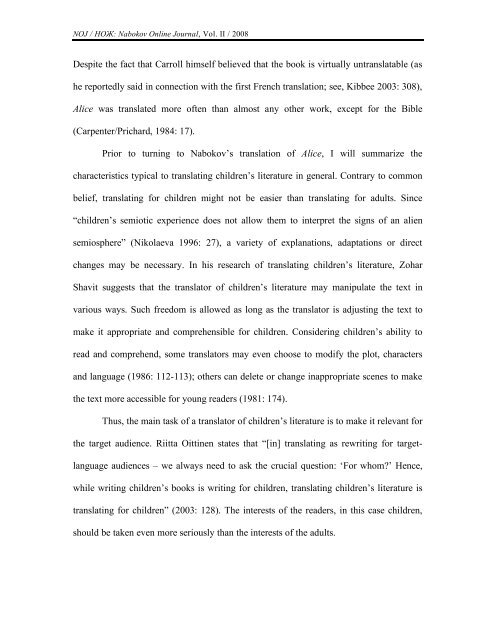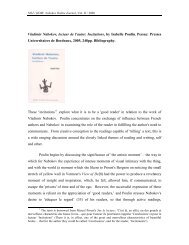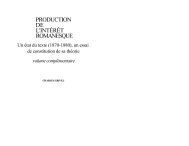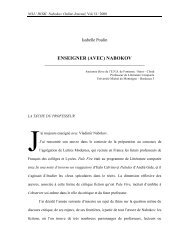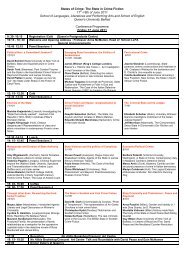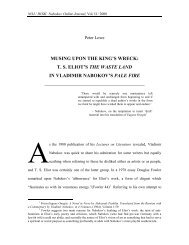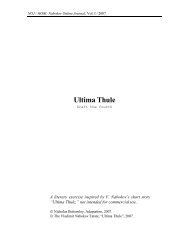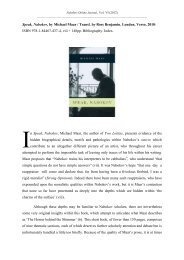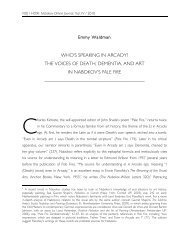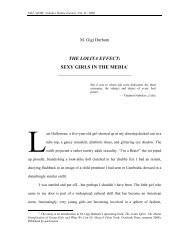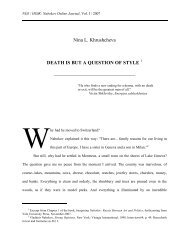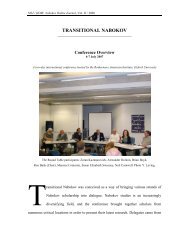domesticated translation: the case of nabokov's translation of alice's
domesticated translation: the case of nabokov's translation of alice's
domesticated translation: the case of nabokov's translation of alice's
Create successful ePaper yourself
Turn your PDF publications into a flip-book with our unique Google optimized e-Paper software.
NOJ / НОЖ: Nabokov Online Journal, Vol. II / 2008<br />
Despite <strong>the</strong> fact that Carroll himself believed that <strong>the</strong> book is virtually untranslatable (as<br />
he reportedly said in connection with <strong>the</strong> first French <strong>translation</strong>; see, Kibbee 2003: 308),<br />
Alice was translated more <strong>of</strong>ten than almost any o<strong>the</strong>r work, except for <strong>the</strong> Bible<br />
(Carpenter/Prichard, 1984: 17).<br />
Prior to turning to Nabokov’s <strong>translation</strong> <strong>of</strong> Alice, I will summarize <strong>the</strong><br />
characteristics typical to translating children’s literature in general. Contrary to common<br />
belief, translating for children might not be easier than translating for adults. Since<br />
“children’s semiotic experience does not allow <strong>the</strong>m to interpret <strong>the</strong> signs <strong>of</strong> an alien<br />
semiosphere” (Nikolaeva 1996: 27), a variety <strong>of</strong> explanations, adaptations or direct<br />
changes may be necessary. In his research <strong>of</strong> translating children’s literature, Zohar<br />
Shavit suggests that <strong>the</strong> translator <strong>of</strong> children’s literature may manipulate <strong>the</strong> text in<br />
various ways. Such freedom is allowed as long as <strong>the</strong> translator is adjusting <strong>the</strong> text to<br />
make it appropriate and comprehensible for children. Considering children’s ability to<br />
read and comprehend, some translators may even choose to modify <strong>the</strong> plot, characters<br />
and language (1986: 112-113); o<strong>the</strong>rs can delete or change inappropriate scenes to make<br />
<strong>the</strong> text more accessible for young readers (1981: 174).<br />
Thus, <strong>the</strong> main task <strong>of</strong> a translator <strong>of</strong> children’s literature is to make it relevant for<br />
<strong>the</strong> target audience. Riitta Oittinen states that “[in] translating as rewriting for target-<br />
language audiences – we always need to ask <strong>the</strong> crucial question: ‘For whom?’ Hence,<br />
while writing children’s books is writing for children, translating children’s literature is<br />
translating for children” (2003: 128). The interests <strong>of</strong> <strong>the</strong> readers, in this <strong>case</strong> children,<br />
should be taken even more seriously than <strong>the</strong> interests <strong>of</strong> <strong>the</strong> adults.


